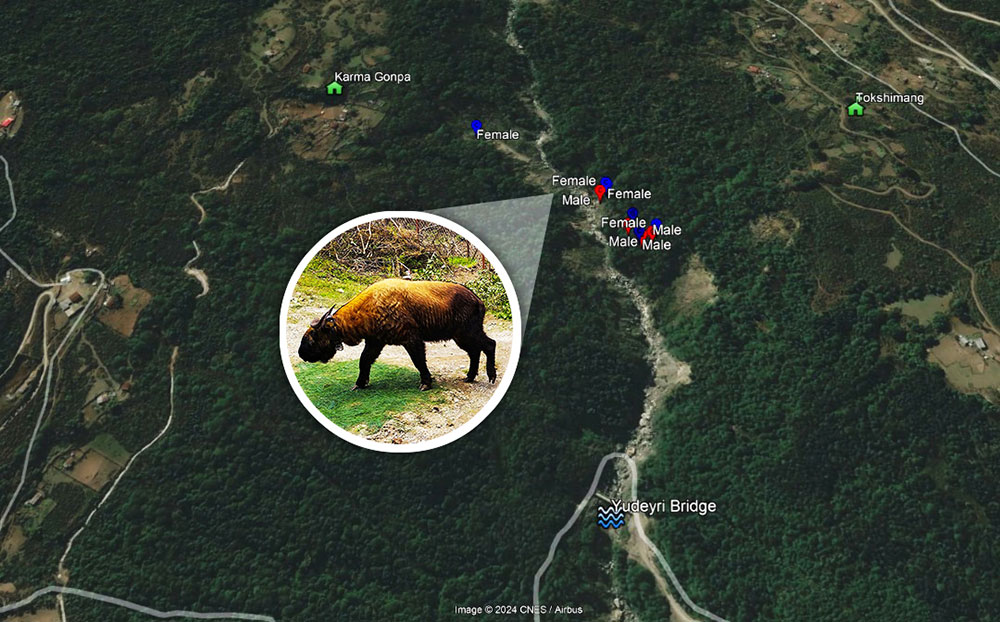Neten Dorji
If the on-going effort is successful, East Bhutan could soon have the national animal – Takin – added to its wildlife.
Encouraging to note, the two female and two male Takins (Budorcas taxicolor whitei) translocated last year to the Sakteng Wildlife Sanctuary (SWS) in Trashigang from Motithang Takin Reserve.
The four Takins were released in a six-acre forest in Kektong brangsa to acclimatise to their new habitat before being freed into the sanctuary. It was observed that the Takins had been residing in Phonmey, Radhi, Sakteng, Merak, and Shongphu after being released from the translocation facility.
They were also mostly observed along the Yudeyri and Dungjurdrang areas in Phongmey, followed by the Chongdeydrang stretch in the Radhi gewog.
“As of today, they are in good health,” said a Sakteng Wildlife Sanctuary official. It was discovered that the Takins exhibited a preference for undisturbed environments such as broadleaved forests and ridges, where there was minimal competition for resources and space.
“The furthest they have gone since their release is to Thromang Lhakhang in Shongphu gewog and Tholong and Pangkom in Sakteng gewog,”said another official. “We discovered that, by the end of November last year, they had settled at Yudeyri under Phongmey gewog after spending several months travelling between various gewogs.”
Two takins were radio-collared to study their movements. Officials kept an eye on their movements and periodically gathered data on how they moved. They had not separated and were in the same locations.
“As per the radio-collared study, they are staying together,” the SWS official said. “Though there have been informal complaints from locals over Takins reportedly attacking them while they were herding their cows, we have not received any formal complaints from the community.”
In a similar effort in 2016, all the six takins introduced to the Sakteng sanctuary died because of transportation shock or for not being able to adapt to the new habitat, according to officials.
Last year, SWS reintroduced Takins to establish a distinct population in the eastern part of the country to preserve its population in case of unfortunate natural calamities like lumpy skin disease that could wipe out the takin population in western Bhutan.
Besides, it was also to boost the eco-tourism in East Bhutan, and enhance the biodiversity within the SWS.
Legend has it that in the 15th century, a Tibetan saint, Lam Drukpa Kunley, well-known as “Divine Madam” created this unique animal that resembled a quaint blend between a cow and a goat.
Takins are found from forested valleys to rocky, grass-covered alpine zones, at altitudes between 1,000 and 4,500 m (3,300 and 14,800 ft) above sea level. The takin is found in four countries – India, China, Myanmar, and Bhutan, while in Bhutan takin is found in western part of the country.
The Sakteng Wildlife Sanctuary has a similar elevation and environment to the animal’s habitats in the west according to Park officials. Sakteng Wildlife Sanctuary is a 650 km square national park in eastern Bhutan, bordering the Indian state of Arunachal Pradesh.


